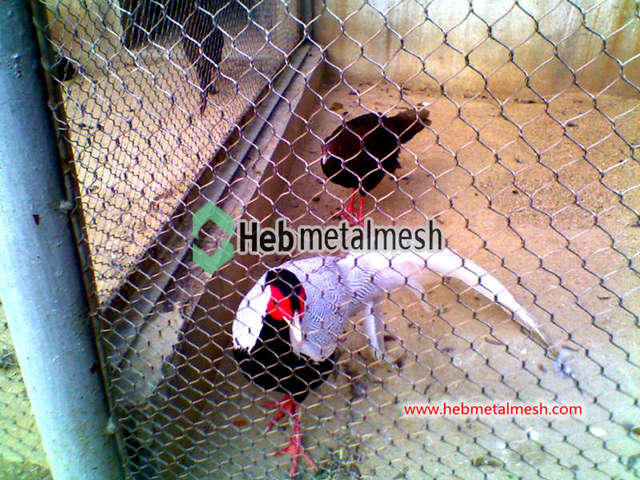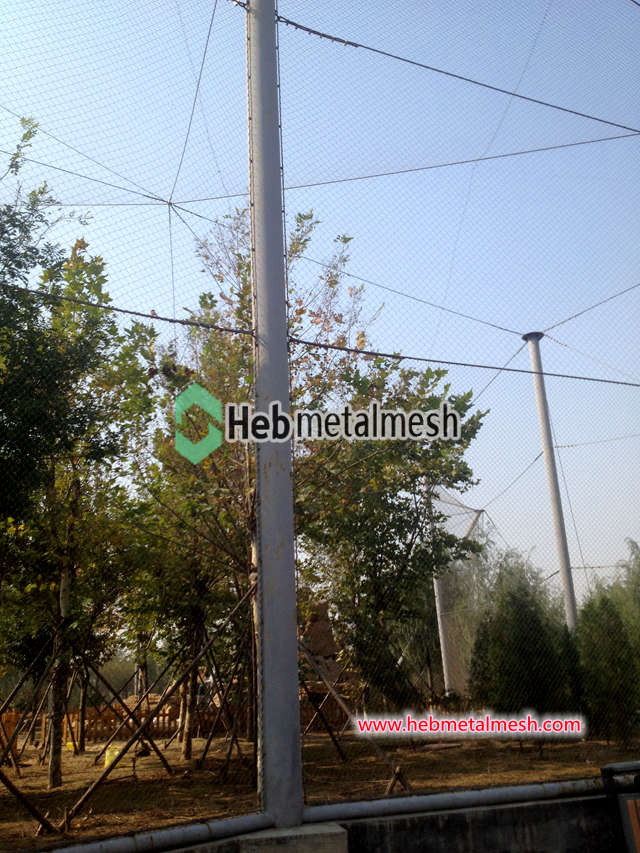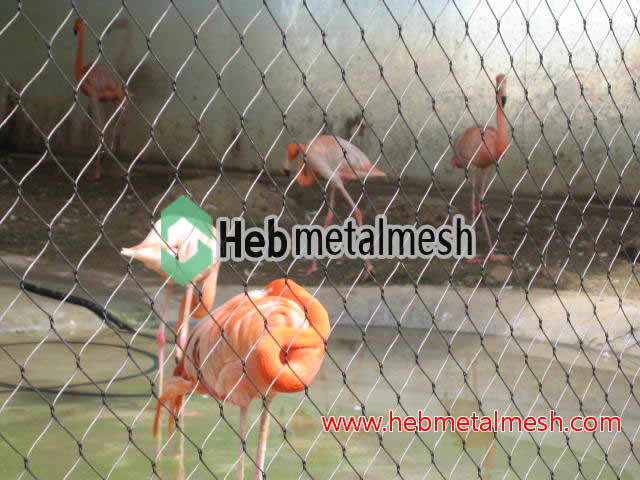Introduction to Bird Enclosure Netting
Bird enclosure netting is a specialized material designed to create a protective barrier for birds in various environments. This netting serves multiple purposes, primarily safeguarding birds from potential dangers such as predators, harsh weather conditions, and escapes from their designated spaces. Its design often consists of durable mesh that permits essential light and air circulation while offering security, making it an essential component in bird care and management.
The rising popularity of bird enclosure netting can be observed in a wide range of settings that include residential gardens, wildlife sanctuaries, pet bird aviaries, and rehabilitation centers. Homeowners increasingly recognize the value of providing a safe outdoor environment that allows their avian companions to enjoy fresh air and natural sunlight while remaining secured from external threats. Moreover, commercial aviaries have adopted this netting as a fundamental aspect of bird welfare, ensuring the safety of a diverse array of bird species while enabling visitors to observe them in a controlled setting.
Aside from the practical considerations, there are emotional and ecological benefits associated with using bird enclosure netting. It allows bird enthusiasts and caretakers to foster a safe habitat that nurtures the well-being of these creatures, leading to healthier and happier birds. This enhanced environment not only contributes to the overall welfare of birds but also helps cultivate a deeper appreciation and understanding of avian wildlife among people. Bird enclosure netting thus plays a pivotal role in promoting conservation and responsible bird ownership, highlighting its importance in both personal and ecological contexts.

Understanding the Benefits of Bird Enclosure Netting
Bird enclosure netting serves as a vital protective barrier for avian species, ensuring their safety and well-being. One of the primary benefits of utilizing this type of netting is its ability to shield birds from potential predators. By creating a secure environment, bird enclosure netting minimizes the risk of attacks from cats, hawks, and other creatures that may pose a threat. This is particularly crucial for bird species that are young or vulnerable, allowing them to thrive in an environment where they can exercise their natural behaviors without constant fear of predation.
Furthermore, bird enclosure netting also plays a significant role in preventing escape. For bird enthusiasts who keep birds in outdoor aviaries, this netting ensures that their feathered companions remain safely contained. This containment is essential for the welfare of the birds, as it reduces stress and limits exposure to potential dangers from the outside world, such as traffic or environmental hazards. As a result, bird enclosure netting enables owners to create a controlled habitat where birds can exhibit free flying and other behavioral traits typical of their species.
In addition to protection and containment, bird enclosure netting contributes to the broader conservation efforts for various bird species. By providing a haven for birds to reside, this netting promotes biodiversity and supports the natural lifestyles of these creatures, especially in areas where natural habitats may be diminishing. Moreover, aesthetically, bird enclosure netting can enhance garden landscapes by offering an attractive way to showcase these beautiful animals while maintaining safety. The combination of functionality and visual appeal makes bird enclosure netting an invaluable tool for those dedicated to bird care and conservation.
Choosing the Right Type of Bird Enclosure Netting
When it comes to selecting bird enclosure netting, several important factors must be considered to ensure the safety and well-being of the birds. The first aspect to evaluate is the material of the netting. Among the various options available, stainless steel rope mesh stands out as a highly durable choice. This type of netting is known for its strength and resistance to wear and tear, making it ideal for long-term use. Unlike synthetic materials, stainless steel does not degrade over time, providing lasting protection for birds in their enclosures.
Another critical consideration is the mesh size of the enclosure netting. It is essential to choose a mesh size that prevents birds from escaping while also keeping out potential predators. Larger birds may require a more substantial mesh, while smaller species might necessitate finer mesh to ensure their safety. Evaluating the type of birds housed within the enclosure will greatly influence this decision and help ensure their protection.
Additionally, UV resistance should be a primary concern. Outdoor netting that is exposed to sunlight must be able to withstand UV rays to prevent degradation. Many stainless steel rope mesh options offer this aspect, ensuring that the netting retains its integrity over time. Overall strength is another factor that cannot be overlooked, as strong netting is necessary to withstand wind and other environmental stresses.
In summary, selecting the right type of bird enclosure netting involves a thorough understanding of materials, mesh size, UV resistance, and strength. By focusing on stainless steel rope mesh as a preferred option, you can ensure a safe and durable environment for your birds. Always consider your specific needs and the species of birds involved when making your selection, as this will contribute significantly to their overall care and safety.

Finding Bird Enclosure Netting Nearby
Acquiring bird enclosure netting can be conveniently achieved by exploring various local and online options, making it easier to create safe spaces for your feathered friends. One of the best places to start is by visiting local garden supply stores. These establishments typically carry a range of products tailored for outdoor use, including netting specifically designed for bird enclosures. Engaging with knowledgeable staff can yield valuable insights regarding the types of netting that may suit your needs.
Additionally, specialty pet shops are another viable source for bird enclosure netting. These retailers often cater to the needs of pet owners and might stock dedicated products for bird enthusiasts, including both netting and the necessary hardware for installation. If you choose this route, it’s prudent to ask store associates about any environmentally friendly or durable options they might recommend.
Furthermore, online marketplaces have revolutionized the way consumers shop for products like bird enclosure netting. Websites such as Amazon, eBay, and even dedicated pet supply sites often feature extensive inventories of various netting types. When searching online, consider reading customer reviews to evaluate the quality of the materials, as well as the experiences of other users. This can help ensure you are making a sound investment in a product that will provide effective protection.
In supporting local businesses, consumers not only promote community engagement but often benefit from tailored advice and the opportunity to directly assess the quality of the netting being considered. When contacting local stores or browsing online, inquire about product availability, allowing for a smoother purchasing experience. By exploring these options, you can find suitable bird enclosure netting nearby that meets your specific requirements while contributing to your community’s economy.
Bird Enclosure Netting for Sale: Where to Look
Finding the right bird enclosure netting is essential for ensuring the safety and well-being of birds while providing them with an aesthetically pleasing environment. There are various channels available for purchasing quality bird enclosure netting. Both physical storefronts and online platforms offer unique benefits, catering to different customer preferences.
Local garden centers and pet supply stores are excellent physical locations to explore when seeking bird enclosure netting. Often, these retailers provide a selection of netting materials that can be inspected firsthand. Customers benefit from the ability to ask staff questions regarding the netting’s durability and suitability for their specific bird species. Additionally, purchasing from local stores supports community businesses and allows for immediate acquisition of products without the wait for shipping.
On the other hand, online marketplaces have gained popularity for their convenience and extensive variety. E-commerce platforms such as Amazon and specialized pet supply websites often carry a broader range of bird enclosure netting options, allowing customers to compare different products easily. Shoppers can read customer reviews, which provide insights into the performance and quality of various netting types. Furthermore, many online sellers offer detailed descriptions and specifications to help buyers make informed choices.
When considering where to purchase bird enclosure netting, it is crucial to select reputable sellers. Websites such as Chewy and Home Depot are well-known for providing high-quality materials along with customer service support. Researching product reviews and ratings can also guide potential buyers in identifying trustworthy sources. In addition, exploring wholesale suppliers can yield cost-effective options for those needing larger quantities of netting. By considering both physical retailers and online platforms, shoppers can find bird enclosure netting that meets their needs effectively.
Understanding Bird Enclosure Netting Prices
When considering bird enclosure netting for your aviary, understanding the associated costs is crucial. The price of bird enclosure netting can greatly vary based on several factors, including size, material, and brand. First and foremost, the size of the netting required plays a significant role in determining costs. Larger enclosures will naturally require more netting material, which increases the overall expense. As you plan your bird enclosure, be sure to measure your space accurately to ensure a proper fit and avoid unnecessary costs.
Material type is another key factor influencing the price of bird enclosure netting. Various materials, such as nylon, polyethylene, and polyester, offer different levels of durability, UV resistance, and weather protection. While less expensive options may be tempting, investing in high-quality netting can provide better long-term value. Premium materials tend to have enhanced features, such as greater resistance to wear and tear from environmental factors and the ability to withstand the natural behaviors of birds within the enclosure.
Brand and manufacturer reputation also impact pricing. Established brands often charge a premium due to their commitment to quality and reliability. However, it is essential to evaluate if the higher cost aligns with the durability and effectiveness of the product. When comparing prices, researching customer reviews and ratings can provide valuable insights into the performance of different brands and their offerings.
Ultimately, while it may be tempting to go for the lowest price, understanding that effective bird enclosure netting is an investment will guide you in making the right choice. Taking into account size, material, and brand will help you find a product that provides the necessary protection and longevity for your avian companions.
Installing Bird Enclosure Netting: A Step-by-Step Guide
Installing bird enclosure netting is a crucial step in creating a safe and secure environment for your feathered friends. Before beginning the installation process, it is essential to gather the necessary tools and materials. You will need bird enclosure netting, sturdy posts (preferably made of wood or metal), connectors, scissors, and optional hardware for added reinforcement. A measuring tape and a ladder will also be beneficial for precise measurements and installation at greater heights.
Preparation is vital for an effective installation. Begin by selecting an appropriate location that is free from sharp objects, and ensure there is enough space for your birds to expand their wings. Measure the area where the netting will be installed, taking into account the height and width. It’s advisable to mark the boundaries using chalk or stakes. Once you have your measurements, cut the bird enclosure netting to the desired size, allowing a little extra material to account for stretching and fitting.
Next, install the posts at the corners of the designated area, ensuring they are placed firmly into the ground for stability. Depending on the size of your enclosure, additional posts may be required to prevent sagging. After securing the posts, it is time to attach the bird enclosure netting. Position the netting over the frame, and carefully secure it using connectors or ties, making sure it is taut to prevent any bird from escaping. If the area is particularly large, consider using a second layer of netting for added protection against predators.
During the installation, periodically check for any holes or weak points in the netting and reinforce them as needed. It’s also beneficial to add weights or anchors at the base of the netting to ensure it remains securely in place. Following these steps will help you effectively install bird enclosure netting and create a safe habitat for your birds. Regular inspections and maintenance will further ensure the longevity and effectiveness of the netting.
Maintenance and Care Tips for Bird Enclosure Netting
To ensure the longevity and effectiveness of bird enclosure netting, regular maintenance is imperative. A proactive approach will aid in preserving the integrity of the netting and maintaining a safe environment for the birds. Routine inspections should be conducted to identify any areas of wear and tear, as even the most durable netting can succumb to the elements over time. Look for signs of fraying, holes, or weakened edges, particularly after extreme weather events.
Cleaning the netting is another essential aspect of its maintenance. Dust, debris, and bird droppings can accumulate on the surface, which not only detracts from its appearance but can also lead to degradation if not addressed. Using a gentle soap solution combined with warm water and a soft brush, clean the netting periodically to prevent build-up. Ensure that all soap residue is thoroughly rinsed to avoid any adverse effects on the birds. Depending on the environment and frequency of use, conducting this cleaning every few weeks might suffice.
Timely repairs are crucial to maintain the overall effectiveness of bird enclosure netting. If any damages are discovered during inspections, addressing them immediately can prevent the problem from worsening. Small tears can often be mended with a net repair kit specifically designed for this purpose, which can seamlessly restore the netting’s structural integrity. In cases where damage is extensive or compromises the safety of the birds, replacement may be necessary.
In conclusion, consistent maintenance and care of bird enclosure netting play a fundamental role in safeguarding the birds’ environment. By adhering to these guidelines of regular inspections, cleaning, and timely repairs, the netting can remain a reliable barrier, providing protection while allowing birds to thrive in their enclosure.
Conclusion: The Importance of Creating Safe Spaces for Birds
In the pursuit of providing a nurturing environment for our avian companions, the significance of bird enclosure netting cannot be overstated. Throughout this guide, we have explored essential aspects of selecting, installing, and maintaining this protective feature, emphasizing its role in ensuring the safety of birds. One primary focus has been the need for secure netting that prevents potential dangers posed by predators, harsh weather conditions, and human interference. This protective barrier allows birds to thrive while providing peace of mind for their caretakers.
We have discussed various types of bird enclosure netting, from lightweight options suitable for smaller species to robust solutions designed for larger birds. Ensuring the proper fit and installation of netting is critical, as it directly impacts the level of safety and security afforded to the birds. Proper maintenance practices were highlighted, emphasizing the importance of regularly inspecting the netting for wear or damage, thereby extending its lifespan and maintaining a secure habitat.
Moreover, creating safe spaces for birds not only benefits their physical well-being but also enhances their emotional health. Birds are social creatures that require mental stimulation and an enriching environment, which can be facilitated through thoughtfully designed enclosures. The emotional rewards that come from responsible bird ownership are profound; witnessing the joy and safety of your birds fosters a deeper connection and enhances the overall experience of caring for these remarkable creatures.
In conclusion, investing in high-quality bird enclosure netting is a crucial step for any bird owner dedicated to safeguarding their pets. By following best practices in selection, installation, and maintenance, owners can create a safe haven for their birds, ensuring they lead healthy, fulfilling lives. The effort put into creating these secure spaces is not merely functional; it is a testament to the love and responsibility that comes with bird ownership.


